26th August, 2025
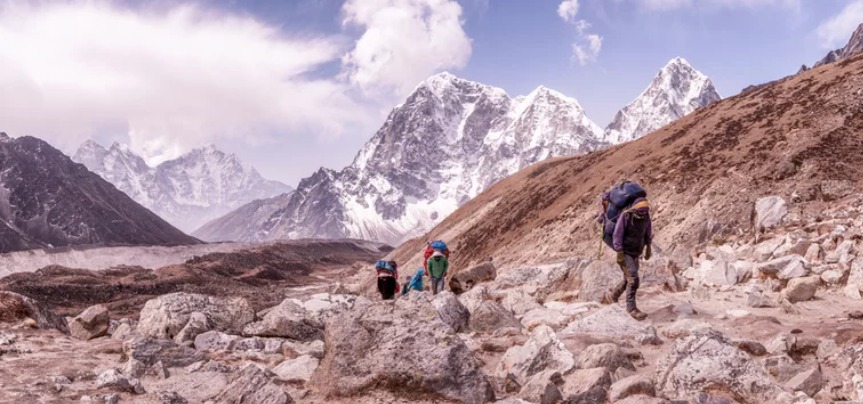
Jun 19, 2024
Lobuche Peak Climbing in May
- Conquering Lobuche Peak in the Spring Season
- Welcome to Lobuche Peak Climbing: An Adventure of a Lifetime
- Introducing Lobuche Peak: Geography, Elevation, and Climbing Routes
- Why Climb Lobuche Peak in May? Advantages and Challenges
- Physical Conditioning for High-Altitude Climbing
- Essential Gear and Equipment for Lobuche Peak Climbing
- Obtaining Permits and Arranging Logistics
- Lukla to Phakding: The First Steps on the Everest Trail
- Namche Bazaar to Tengboche: Acclimatization and Scenic Views
- Tengboche to Dingboche: The Trail to the Base of Lobuche East
- Establishing Base Camp and Preparing for the Ascent
- The Climb to High Camp (5,400m/17,716ft)
- Summit Day: Overcoming Obstacles and Reaching the Top
- Crossing the Glacier to Lobuche West Base Camp
- The Ascent of Lobuche West (6,145m/20,161ft)
- Managing Risk on the Mountain: Hazards, Emergencies, and Contingency Plans
- Weather Forecasting and Avalanche Safety
- Building a Strong Team for a Successful Climb
- Effective Communication and Decision-Making on the Mountain
- Reflections on a Successful Climb: Lessons Learned and Memories Made
- Lobuche Peak Climbing Packages
Lobuche Peak, standing at 6,119 meters (20,075 feet) in the Khumbu region of Nepal, offers an exhilarating climbing adventure for enthusiasts seeking both technical challenge and breathtaking Himalayan vistas. May, falling within the spring climbing season, presents an ideal window for ascending Lobuche Peak, combining favorable weather conditions and clearer skies.
May marks the end of the cold winter months and the beginning of warmer temperatures in the Everest region. Climbers can expect stable weather patterns with relatively clear skies, making it conducive for safe ascents and awe-inspiring views of surrounding peaks like Everest, Lhotse, Nuptse, and Ama Dablam.
The journey to Lobuche Peak typically begins with a scenic flight from Kathmandu to Lukla, followed by a trek through picturesque Sherpa villages and lush rhododendron forests. As climbers gradually ascend to higher elevations, acclimatization stops in villages like Namche Bazaar and Dingboche become crucial to prepare for the challenges of high-altitude climbing.
The climbing route to Lobuche Peak includes technical sections that require previous mountaineering experience and familiarity with using climbing equipment such as crampons, ice axes, and ropes. The ascent involves negotiating steep slopes, crevasses, and possibly encountering snow and ice conditions, adding to the thrill and adventure of the expedition.
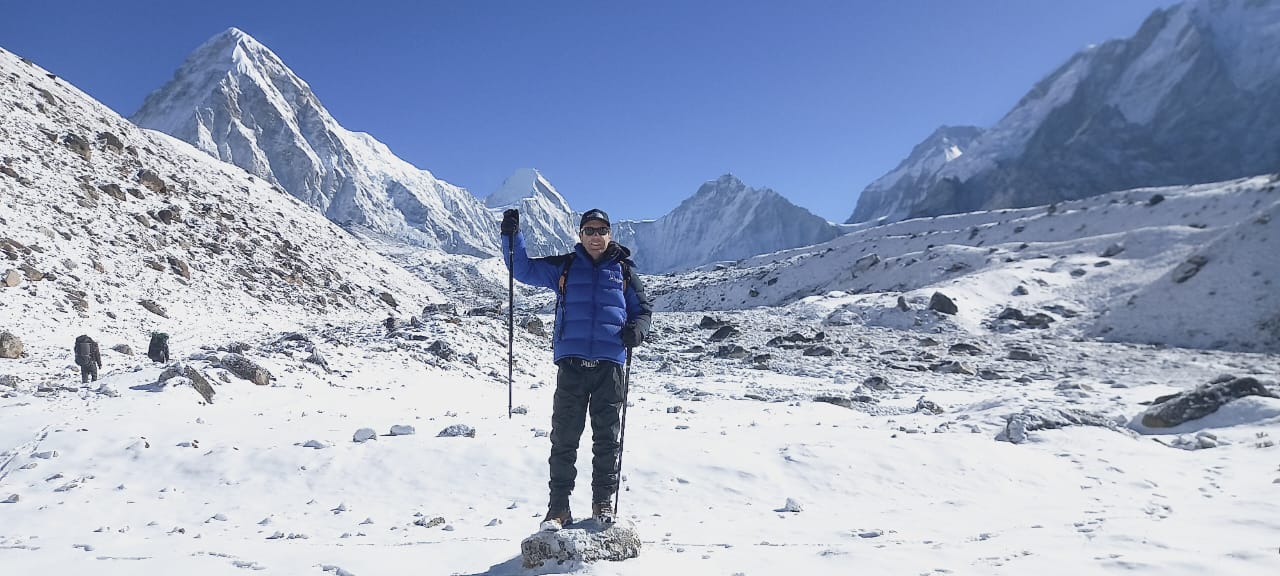
ISLAND AND LOBUCHE PEAK CLIMBING
Lobuche and Island Peak combo climbing expedition is a thrilling adventure that offers a unique opportunity to conquer two popular peaks in the Everest region of Nepal. Lobuche Peak (6,119m) and Islan...
Base Camp for Lobuche Peak climbing is typically established at around 4,950 meters (16,240 feet), offering a strategic starting point for acclimatization and final preparations. Climbers spend several days acclimatizing and practicing essential climbing techniques under the guidance of experienced Sherpa guides.
The summit day is a challenging yet rewarding experience, typically starting before dawn to ensure optimal weather conditions and safety. Climbers navigate the final steep sections, often encountering breathtaking sunrise views over the Himalayan range from the summit of Lobuche Peak, a moment cherished for its unparalleled beauty and accomplishment.
Safety is paramount during the climb, with experienced guides providing support, ensuring proper acclimatization, and monitoring climbers' health throughout the journey. The descent back to Base Camp allows for reflection on the achievements and memories created during the ascent.
In conclusion, May presents an opportune time for climbers to undertake the exhilarating challenge of Lobuche Peak. With its stunning vistas, technical climbs, and cultural immersion in the Sherpa heartland, Lobuche Peak climbing in May promises an unforgettable adventure amidst the majestic Himalayas, leaving climbers with lasting memories of achievement and natural beauty.
Conquering Lobuche Peak in the Spring Season
Climbing Lobuche Peak in the spring season offers mountaineers a remarkable adventure amidst the awe-inspiring landscapes of the Everest region. Spring, particularly in May, is favored for its stable weather patterns and clearer skies, providing ideal conditions for high-altitude climbing. The route to Lobuche Peak presents technical challenges suitable for experienced climbers, with sections requiring the use of crampons, ropes, and ice axes.
Welcome to Lobuche Peak Climbing: An Adventure of a Lifetime
Lobuche Peak, standing at 6,119 meters (20,075 feet), beckons adventurers seeking a thrilling mountaineering experience in the Himalayas. Located in the Khumbu region of Nepal, the peak offers breathtaking panoramic views of Everest, Lhotse, and other iconic summits. Climbing Lobuche Peak is not only a physical challenge but also an opportunity to immerse oneself in Sherpa culture and the natural beauty of the region.
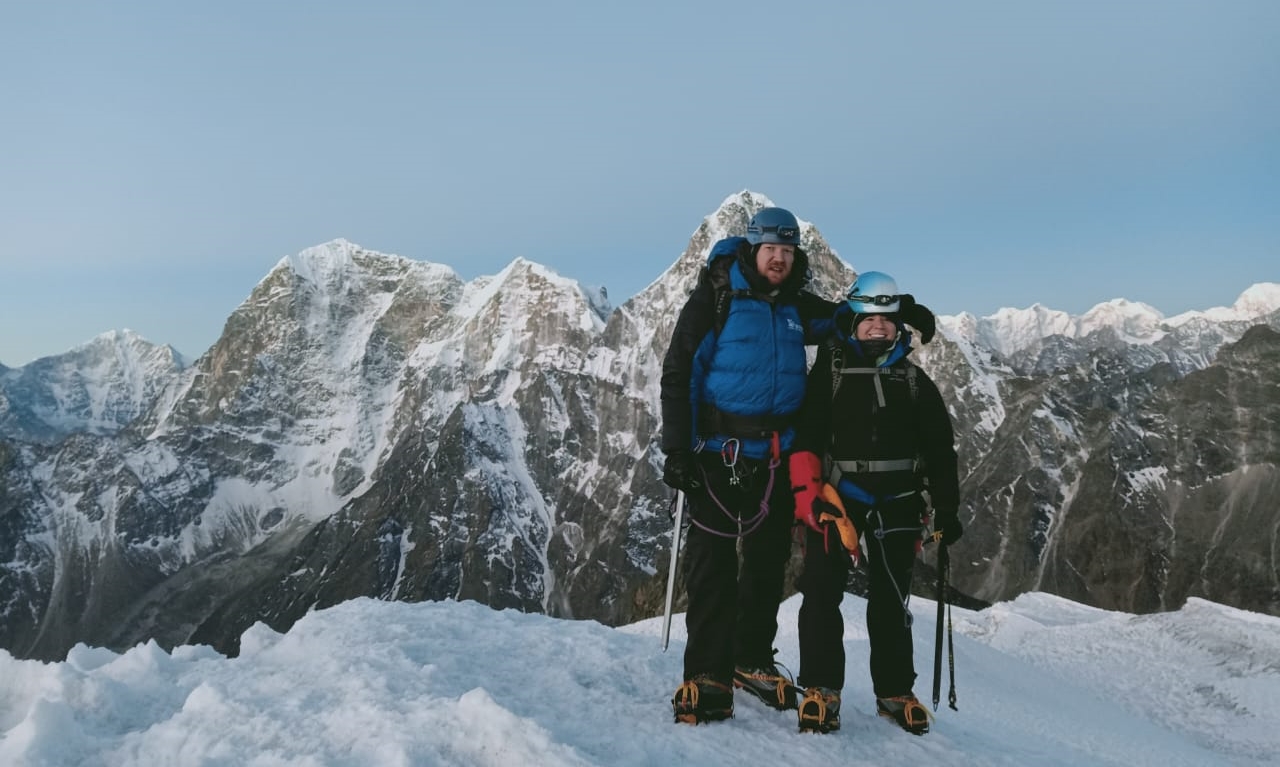
LOBUCHE PEAK CLIMBING
Lobuche East (6,119m/20,075ft), set in Nepal's stunning Khumbu on the Nepalese side of Everest.The best time to go trekking in Nepal is in Autumn (September-November) and in...
Introducing Lobuche Peak: Geography, Elevation, and Climbing Routes
Lobuche Peak is situated in the Sagarmatha National Park, a UNESCO World Heritage site known for its diverse flora and fauna. The peak has two main summits: Lobuche East (6,119 meters) and Lobuche West (6,145 meters). Climbers typically attempt Lobuche East, known for its technically demanding routes and rewarding summit views. The ascent involves traversing glaciers and negotiating steep snow and ice slopes, requiring climbers to be proficient in mountaineering skills.
Why Climb Lobuche Peak in May? Advantages and Challenges
May is considered one of the best months to climb Lobuche Peak due to favorable weather conditions and minimal precipitation. Spring brings stable weather patterns and clearer skies, enhancing safety and visibility during the ascent. However, climbers must be prepared for cold temperatures and potential high-altitude challenges, including altitude sickness and variable weather conditions.
Physical Conditioning for High-Altitude Climbing
Preparing physically for Lobuche Peak climbing involves rigorous training to build strength, endurance, and cardiovascular fitness. Focus areas include cardiovascular exercises, strength training, and aerobic conditioning to enhance stamina and muscle endurance. Climbers should also practice hiking with a loaded backpack and acclimatization hikes to prepare for the altitude. Adequate hydration, nutrition, and rest are crucial for recovery and performance at high altitude, ensuring climbers are physically prepared for the challenges of Lobuche Peak.

LOBUCHE PEAK SUMMIT RETURN BY HELICOPTER
A real climbing adventure that will leave you stunned at the beauty of the Himalayan Mountains. The Lobuche Peak Climbing expedition in the spectacular Khumbu region of Nepal has been ranked by Lonely...
These topics provide an overview of the adventure and preparation involved in climbing Lobuche Peak in the spring season, highlighting its geographical features, seasonal advantages, and physical conditioning requirements for climbers.
Essential Gear and Equipment for Lobuche Peak Climbing
Climbing Lobuche Peak requires specialized gear and equipment to ensure safety and comfort in high-altitude conditions. Essential items include:
- Climbing Gear: Harness, helmet, crampons, ice axe, ropes, and carabiners for technical sections.
- Clothing: Insulated jacket, base layers, waterproof shell, gloves, and mountaineering boots suitable for cold and snowy conditions.
- Sleeping Gear: Down sleeping bag rated for sub-zero temperatures and insulated sleeping pad.
- Navigation: Maps, compass, and GPS device for route finding in challenging terrain.
- Safety Equipment: First aid kit, including medications for altitude sickness, and personal locator beacon (PLB) for emergencies.
- Food and Hydration: High-energy snacks, hydration system (water bottles or hydration pack), and water purification tablets or filter.
Each item should be carefully selected for durability, functionality, and suitability for extreme mountain environments.
Obtaining Permits and Arranging Logistics
Before embarking on the Lobuche Peak climb, climbers must obtain necessary permits from the Nepal Mountaineering Association (NMA). A climbing permit for Lobuche Peak is required, along with a Sagarmatha National Park entry permit. These permits can be arranged through authorized trekking agencies in Kathmandu or upon arrival in Lukla.
Logistics for the climb typically begin with a flight from Kathmandu to Lukla, where the Everest trek begins. Climbers should arrange accommodations in Lukla and subsequent villages along the trail. Local trekking agencies can assist with hiring experienced Sherpa guides and porters, who play crucial roles in logistics, route navigation, and support during the climb.

LOBUCHE PEAK EXPEDITION 14 DAYS
The Lobuche Peak Expedition is a 14-day trekking adventure that takes you to the heart of the Khumbu region in Nepal. It is a popular trekking peak in the Himalayas, with stunning views of the surroun...
Lukla to Phakding: The First Steps on the Everest Trail
The journey to Lobuche Peak starts with a thrilling flight from Kathmandu to Lukla, one of the world's most scenic airports. From Lukla (2,860 meters), climbers trek downhill to Phakding (2,610 meters) on the first day. The trail meanders through lush forests and crosses several suspension bridges over the Dudh Koshi River, offering stunning views of the surrounding peaks.
Phakding provides basic tea houses and lodges for overnight stays, where climbers can rest and acclimatize before continuing their ascent. It serves as an introduction to the unique hospitality and cultural richness of the Everest region.
Namche Bazaar to Tengboche: Acclimatization and Scenic Views
The trek from Namche Bazaar (3,440 meters), the commercial hub of the Khumbu region, to Tengboche (3,860 meters) offers breathtaking views of Everest, Lhotse, and Ama Dablam. This segment includes a significant altitude gain and involves passing through Sagarmatha National Park checkpoints.
Acclimatization stops in villages like Namche Bazaar and Tengboche are essential for adjusting to high altitudes. Tengboche, known for its monastery and panoramic mountain views, is a spiritual and scenic highlight of the Everest Base Camp trek. Climbers can participate in monastery visits and enjoy the serene ambiance amidst the Himalayan peaks.
Tengboche to Dingboche: The Trail to the Base of Lobuche East
From Tengboche, climbers head towards Dingboche (4,410 meters), crossing the Imja Khola River and ascending gradually through rhododendron and juniper forests. Dingboche, located in a wide valley, offers stunning views of Island Peak and Lhotse. It serves as a crucial acclimatization point before ascending higher towards Lobuche East Base Camp.
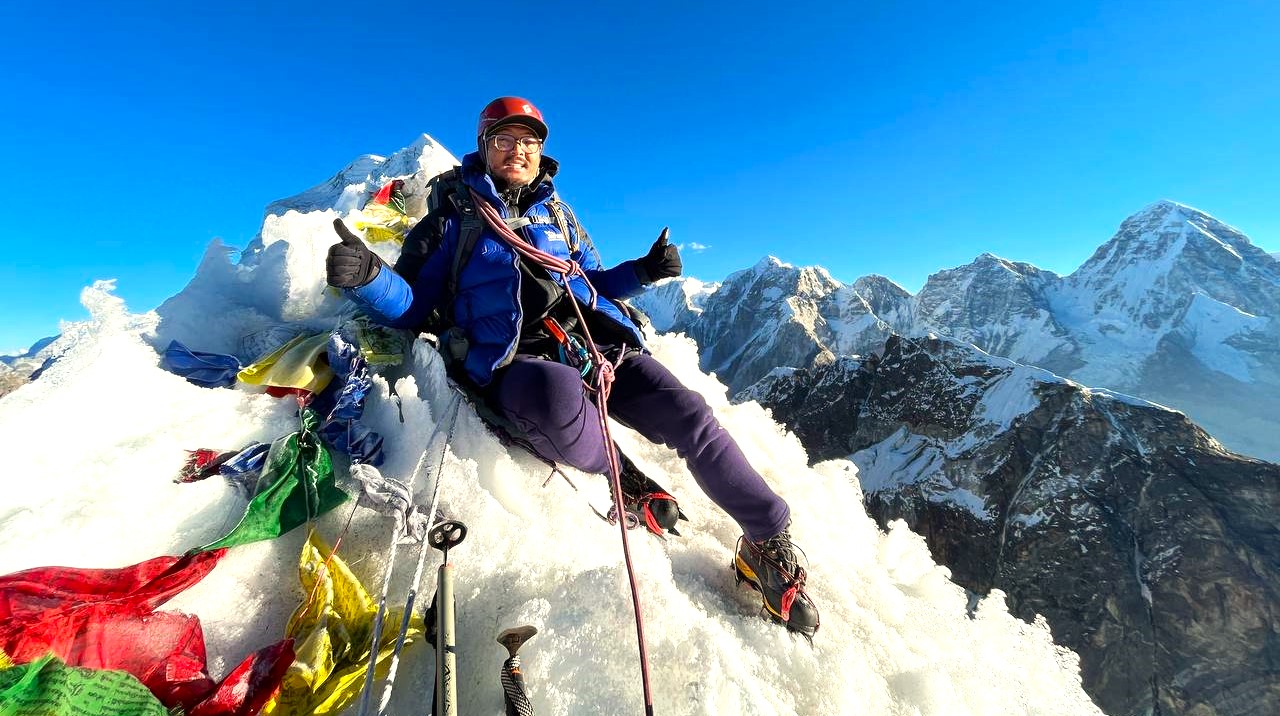
LOBUCHE PEAK EXPEDITION 15 DAYS
Lobuche Peak Expedition is a thrilling adventure that takes you to the heart of the Khumbu region in Nepal. The peak stands at an altitude of 6,119 meters and offers stunning views of the surrounding...
The trek to Dingboche involves crossing alpine terrain and experiencing the diverse flora and fauna of the Everest region. Tea houses and lodges in Dingboche provide comfortable accommodations and meals, preparing climbers for the challenges ahead towards Lobuche Peak.
These topics provide a comprehensive overview of the essential gear and equipment needed for Lobuche Peak climbing, the process of obtaining permits and arranging logistics, as well as detailed descriptions of the trekking stages from Lukla to Dingboche along the Everest trail.
Establishing Base Camp and Preparing for the Ascent
Establishing Base Camp for Lobuche West (6,145m/20,161ft) is a pivotal step in the climbing expedition. Located strategically to provide a safe and stable environment for acclimatization and logistical preparations, Base Camp serves as the starting point for the ascent. It is set amidst the rugged beauty of the Khumbu region, offering breathtaking views of surrounding peaks.
At Base Camp, climbers organize gear, conduct safety briefings, and finalize climbing strategies with guides and Sherpa support teams. The site is equipped with essential facilities such as tents, cooking areas, and medical supplies to ensure climbers are adequately prepared for the challenges ahead.
The Climb to High Camp (5,400m/17,716ft)
The ascent to High Camp marks a significant stage in the Lobuche West climb, involving a challenging trek through rocky terrain and moraines. Climbers navigate steep slopes and crevasses while ascending to an altitude of 5,400 meters (17,716 feet). The journey requires careful pacing to manage energy levels and acclimatize effectively.
High Camp offers basic accommodations and serves as a crucial acclimatization point before the final push towards the summit. Climbers rest, hydrate, and prepare for the summit bid while enjoying panoramic views of the Himalayan landscape. Sherpa guides provide support, ensuring climbers are well-prepared and equipped for the rigorous ascent ahead.
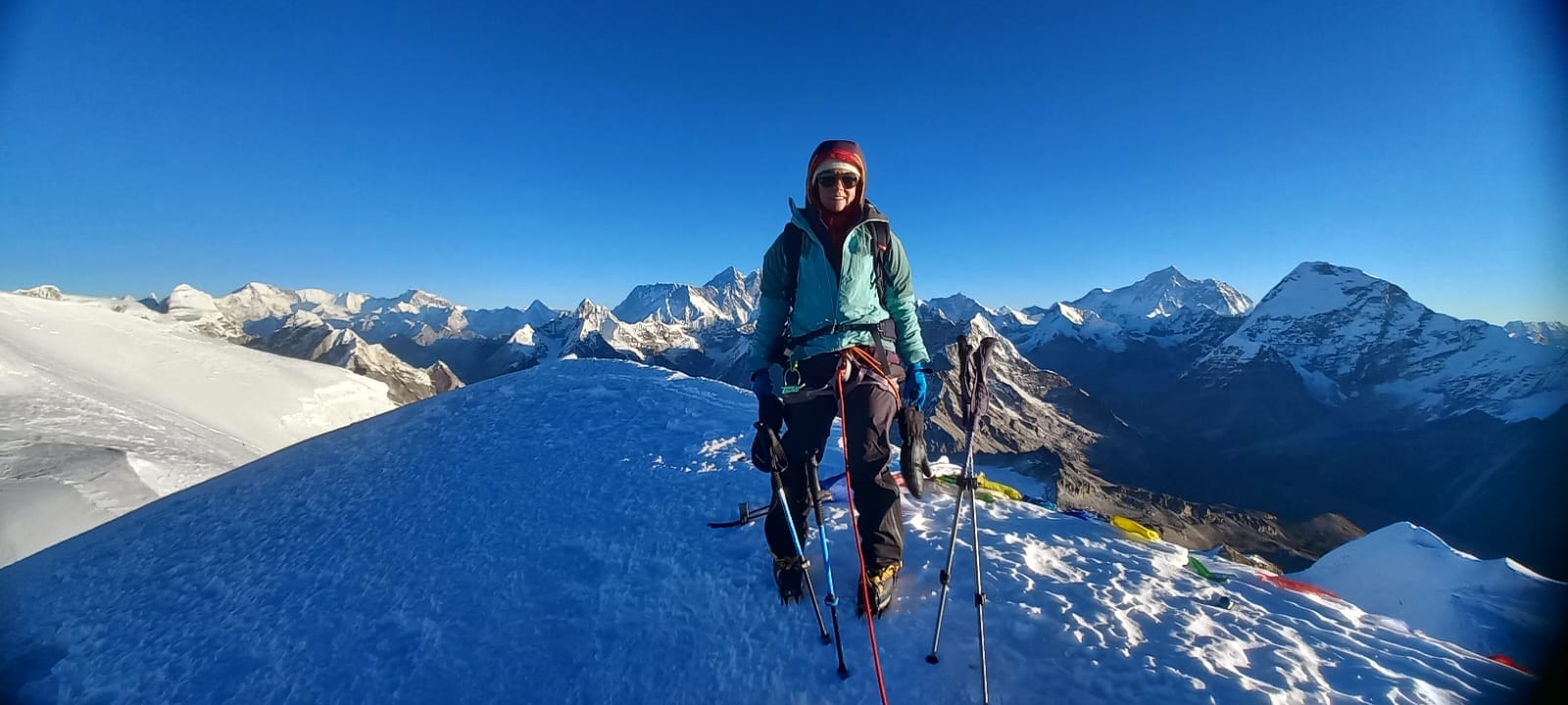
Three Peak Expedition
Embark on an unforgettable journey to the heart of the Himalayas as you conquer three majestic peaks: Mera Peak, Island Peak, and Lobuche Peak. This ultimate adventure combines technical climbing, bre...
Summit Day: Overcoming Obstacles and Reaching the Top
Summit day begins before dawn, with climbers setting out under the light of headlamps to navigate challenging terrain and icy slopes. The ascent to Lobuche West summit (6,145m/20,161ft) demands physical endurance and mental fortitude, tackling technical sections with the aid of ropes and crampons.
As climbers ascend, they are rewarded with awe-inspiring views of Everest, Lhotse, and Makalu, among other towering peaks. The final push to the summit involves overcoming fatigue and altitude challenges, relying on teamwork and determination to achieve the ultimate goal.
Reaching the summit of Lobuche West is a momentous achievement, marking the culmination of months of preparation and dedication. Climbers celebrate amidst the pristine beauty of the Himalayas, capturing memories that will last a lifetime.
Crossing the Glacier to Lobuche West Base Camp
Descending from the summit, climbers navigate carefully across the glacier to Lobuche West Base Camp. The journey requires focus and precision, as crevasses and shifting ice present potential hazards. Sherpa guides ensure safe passage, guiding climbers through the challenging terrain back to Base Camp.
Upon returning to Base Camp, climbers rest and reflect on their summit experience, sharing stories of triumph and camaraderie. The atmosphere is one of accomplishment and gratitude for the opportunity to conquer one of Nepal's majestic peaks.
The Ascent of Lobuche West (6,145m/20,161ft)
The ascent of Lobuche West is a technical climb that requires mountaineering skills and experience. Climbers navigate steep ice and snow slopes, using fixed ropes and ice axes for stability. The route offers stunning views of the Khumbu Glacier and surrounding peaks, rewarding climbers with unparalleled panoramas of the Everest region.
At 6,145 meters (20,161 feet), the summit of Lobuche West provides a sense of achievement and adventure, making it a sought-after destination for climbers seeking to test their skills in high-altitude environments.
Managing Risk on the Mountain: Hazards, Emergencies, and Contingency Plans
Managing risk is crucial for a safe ascent of Lobuche West (6,145m/20,161ft). Mountaineers face various hazards including avalanches, crevasses, altitude sickness, and extreme weather conditions. Contingency plans are essential, outlining responses to emergencies such as injuries, equipment failures, or adverse weather.
Sherpa guides and climbers conduct thorough risk assessments before and during the climb, identifying potential hazards and implementing safety protocols. Communication devices like satellite phones ensure emergency contact with support teams and evacuation plans if needed.
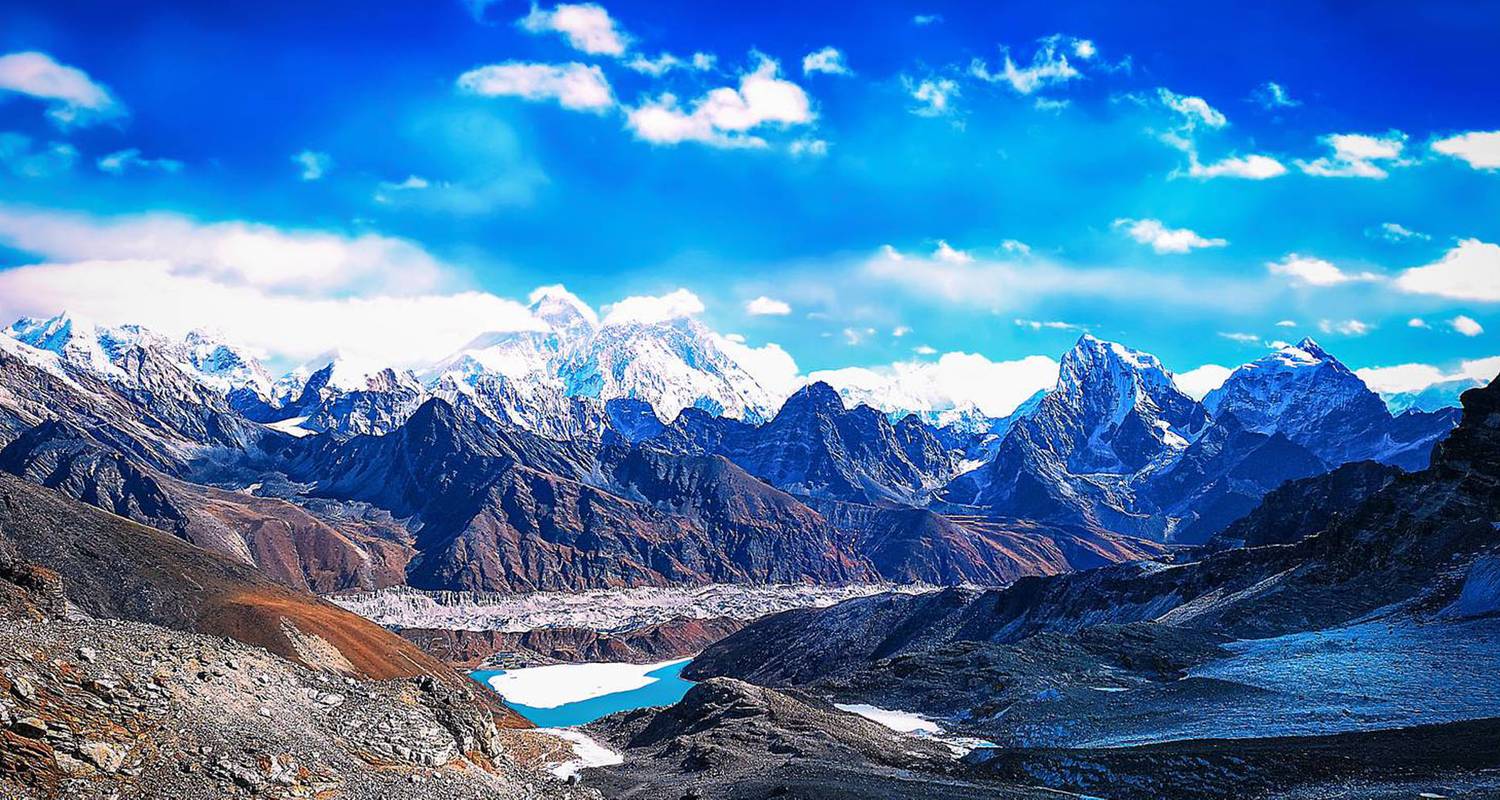
Everest Three High Pass Trek with Island Peak Climbing
The Everest Three High Pass Trek with Island Peak Climbing is an exhilarating and challenging adventure that takes you through the stunning landscapes of the Everest region in Nepal. This 23-25...
Weather Forecasting and Avalanche Safety
Weather forecasting plays a vital role in planning and executing a successful climb. Climbers rely on daily weather updates from meteorological services to anticipate changing conditions, including wind speed, temperature, and precipitation. Clear weather windows are crucial for summit attempts, ensuring safe navigation and minimal exposure to hazards.
Avalanche safety protocols involve assessing snow stability, using avalanche transceivers, and practicing safe travel techniques in avalanche-prone areas. Climbers and guides receive training in avalanche awareness and rescue techniques, enhancing safety on the mountain.
Building a Strong Team for a Successful Climb
Building a cohesive team is essential for a successful Lobuche West ascent. The team includes experienced Sherpa guides, porters, and climbers with diverse skills and strengths. Trust, mutual support, and effective communication are key to overcoming challenges and achieving collective goals.
Team dynamics are fostered through pre-expedition training, team-building exercises, and shared responsibilities. Each member contributes to route finding, camp setup, and decision-making, fostering a supportive environment throughout the climb.
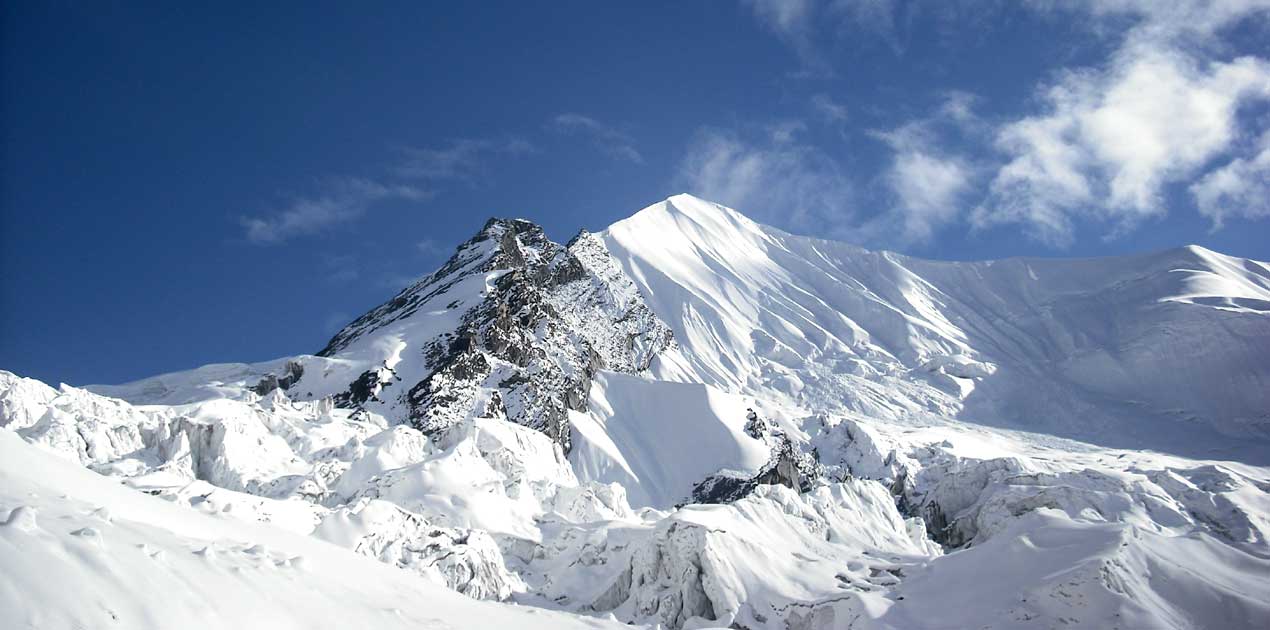
PACHERMO PEAK CLIMBING
Believe in yourself! You have what it takes to summit this beautiful peak in the remote Rolwaling district in the northeast of Nepal – near the Tibetan border. It is physically demanding, but with som...
Effective Communication and Decision-Making on the Mountain
Effective communication is critical in high-altitude environments where conditions can change rapidly. Clear communication ensures safety, coordination, and informed decision-making among team members. Radios, satellite phones, and hand signals facilitate communication in remote and challenging terrain.
Decision-making on the mountain involves assessing weather forecasts, route conditions, and individual health. Team consensus and leadership play crucial roles in evaluating risks, adjusting plans, and prioritizing safety over summit objectives.
Reflections on a Successful Climb: Lessons Learned and Memories Made
Reflecting on a successful climb of Lobuche West involves celebrating achievements and learning from experiences. Climbers gain insights into personal strengths, resilience, and teamwork throughout the expedition. Memories of breathtaking views, challenging ascents, and camaraderie with fellow climbers create lasting impressions.
Lessons learned include adapting to high-altitude challenges, managing risks effectively, and appreciating the natural beauty of the Himalayas. Climbers return with a sense of accomplishment and gratitude for the opportunity to explore Nepal's iconic peaks.
These topics highlight the importance of risk management, weather forecasting, team dynamics, communication strategies, and reflections on personal growth and achievements during a Lobuche West climb.
```package_id|chulu-west-peak-climbing``
Lobuche Peak Climbing Packages
Lobuche Peak Summit Return By Helicopter
Lobuche Peak Expedition 14 Days
Any Questions? Let Us Know.
Recent Posts
17th June, 2025


















